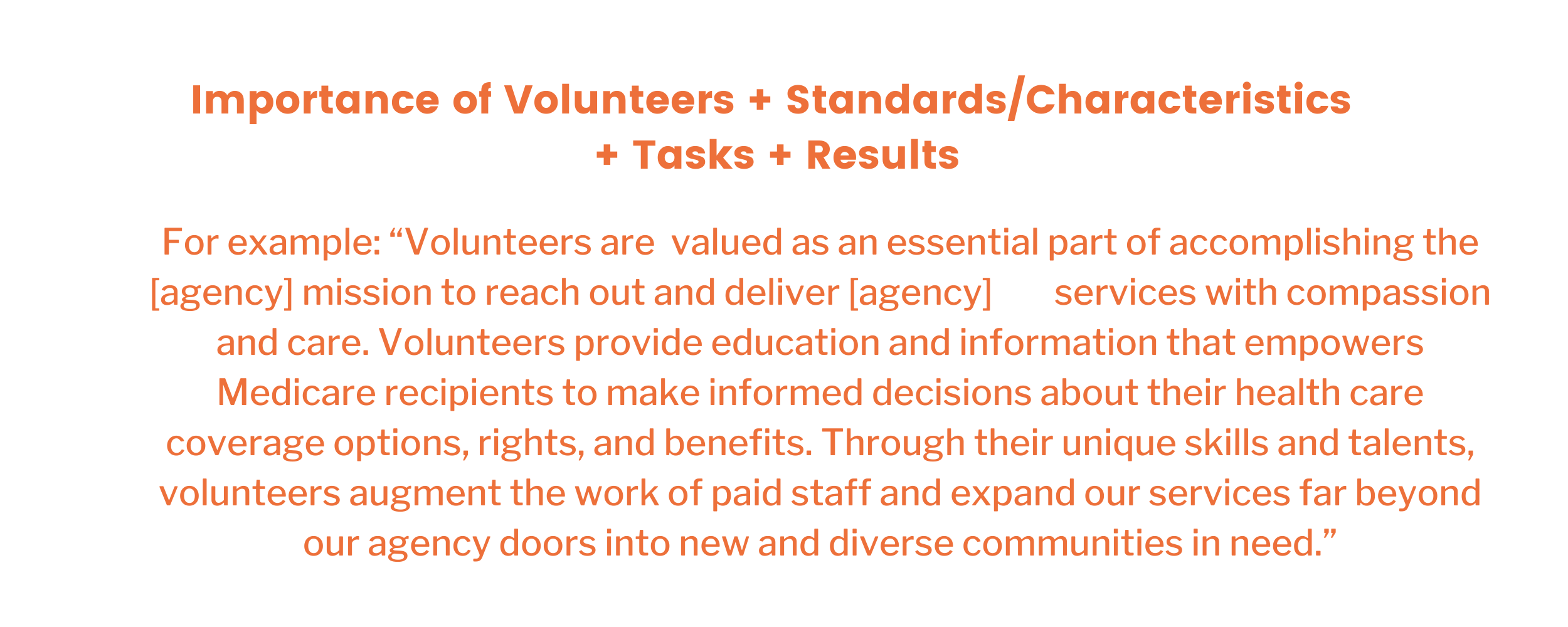 How to Set Up a Volunteer Handbook That Fosters Engagement
How to Set Up a Volunteer Handbook That Fosters Engagement
As nonprofits rely on volunteers more and more every day to perform in leadership roles, a volunteer handbook is needed to help guide them through the orientation process and to learn about the organization’s history and goals.
If you don’t offer this critical component in your volunteer program, you risk the possibility that volunteers won’t stick around for the long haul. When you help volunteers make a smooth transition from orientation to service, with clear information about their roles and responsibilities, you can manage their expectations and with the right support, new volunteers will decide on a higher level of commitment to your organization.
Your volunteer handbook is a guide to your organization on how volunteers can expect to fit in as a piece of the puzzle. It helps your volunteers locate where they are, see where they are headed, and figure out how long it will take to get there.
Volunteer handbooks don’t just help volunteers either. They can help your organization manage risk if you encounter a volunteer that doesn’t comply with policies and procedures. The handbook documents that you shared the rules, roles, expectations, grievance procedures, etc. with your volunteers early in their placement with you.
Finally, what better way to welcome volunteers into your organization? Include a welcome letter and that sets the tone for their relationship with your organization, and let them know how glad you are that they are onboard as a volunteer.
Read on to learn more about what you should include in your volunteer handbook. Please just keep in mind that this post is not exhaustive, nor is it intended to provide or replace qualified legal advice. It is meant to highlight potential issues for organizations. Please obtain advice, based on national/state laws, from your HR department and/or a qualified legal practitioner.
What Key Items Should You Include in Your Volunteer Handbook?
When you incorporate certain elements, volunteer handbooks can clarify values, communicate vision, build trust, establish continuity, support equity, specify expectations, and manage risk.
Volunteer handbooks are intended to be more than a list of information that your volunteers need to know to do the job they signed up for. You need to treat it as a manual that lists the policies and procedures they are required to abide by, as well as a place they can turn to when they need more support.
This isn’t to say they need to be boring either! Include photos, inspirational quotes, and design it in any way that you’d like, just as long as the information you need to get across is easy to access.
Below is a list of things you might include:
- A Heartfelt Welcome: Include a welcome letter from a leader (either executive management, the board chair, or a respected community leader), and use it as an opportunity to resell the benefits of volunteering for your organization, show gratitude for their commitment, and set the tone for their relationship with your organization.
- Information about Your Organization: Don’t assume your volunteers know a lot about your organization! Include a history of the organization, your mission and vision, programs & services/who you serve, organization chart, community partners, map of program sites, key funders, etc.
- Philosophy of Volunteerism: A statement that speaks to your organization’s rationale for having volunteers involved. Volunteers need to know why they are important to your operations, and this statement, when crafted the right way, shows the value and impact of volunteers! This should be one of the first few pages of your handbook.
Here is our formula for developing your organization’s philosophy of volunteerism:

- Ethics Guidelines: Include your policies, procedures, and statements on diversity and inclusion, anti-racism, sexual harassment, mandated reporting, alcohol and drugs, maintaining professional boundaries, volunteer-client relationships, volunteer-paid staff relationships, client service, conflict of interest, prohibition on affiliations, accepting gifts or compensation, etc.
- Working Conditions: Much like employee handbooks, it’s important that you include information about workplace safety, especially when volunteers may encounter work that is physically and/or emotionally challenging. Include a procedure for reporting accidents and injuries, guidelines for working with contagious diseases, procedures for working off-site (if allowed), tips for emotional and physical self-care, and how to request special accommodations.
- Customer Service: If volunteers are going to have direct contact with clients, you need to ensure they have the tools, support, and knowledge to meet your organization’s service standards. You can accomplish this by including information on your organization’s anti-discrimination policy, how you work to serve limited-English and low-literacy people, information on liability protections, including the federal Volunteer Protection Act and state Good Samaritan laws, your policy on volunteer-client relationships, procedures on how to maintain client confidentiality and keep client records, etc.
- Required Paperwork and Reporting: Your organization likely has rules and regulations that you must follow when it comes to engaging volunteers in service. Ensure you outline these policies clearly, and let your volunteers know how your organization uses the information gathered. For example, if you have a grant requirement that requests monthly reports on volunteer hours, outline why it’s important you collect this data, how they submit their data, and who they should contact with any questions/concerns.
- Training: All volunteers should follow the same onboarding process, regardless of their role with the organization. Include that process in the training section of your volunteer handbook so all volunteers know what to expect. Make sure you include the responsibilities of the organization and the expectations for volunteers in the onboarding process. Also include any training modules, schedules, certifications, continuing education opportunities, and, train-the-trainer opportunities for volunteer roles that require it.
- Perks/Benefits: Volunteering is a two-way street, and no matter what motivates someone to volunteer, the expectation is that they will receive something (tangible/intangible) for their involvement. This is where you can insert some fun! Show how you recognize your volunteers, include photos and client and staff testimonials that show how much your organization loves and appreciates volunteers. Include information on how volunteers to request reimbursements, referrals/references, etc.
- Supervision and Support: Volunteers must know who to reach out to when they encounter challenges on the job or need additional support. Include information on volunteer department staff roles, a contact person for each program area, policies and procedures on attendance, time-sheets, leave of absence, resignation, dismissal, the right to progressive discipline, reasons for immediate dismissal, etc.
- Volunteer Feedback: Offering opportunities for volunteer feedback is an important part of the volunteer journey and you need to provide information in your volunteer handbook on how you will collect this information and how it will inform your volunteer engagement strategy. Provide details on how volunteers can file a grievance or complaint, how your organization collects feedback for program evaluation, and how you conduct exit interviews.
- Resources and Attachments: Finish your handbook with helpful information that makes it easy for your volunteers to connect to your organization on a bigger level. Include links to web sites, marketing materials, how to order office supplies, how to use office equipment, a contact list for key staff, marketing materials, social media profiles, etc. If your organization has social media or marketing policies concerning sharing information, make sure you include it in this section.
Putting Your Volunteer Handbook Together
When you include all of the above, you can expect your volunteers to have all the information they need to encourage expected behavior.
With a well-organized volunteer handbook, you can share agency beliefs and values, help volunteers understand how they fit into the organization, encourage volunteers to resolve conflicts with appropriate staff, reduce volunteer turnover, and manage risks.
Finally, remember our caveat at the beginning of the post? Be sure to have your handbook reviewed by your human resources or legal staff. Just because volunteers aren’t paid, doesn’t mean there aren’t laws or regulations you must follow. Make sure you’re aligned with your agency’s expectations and the law.









